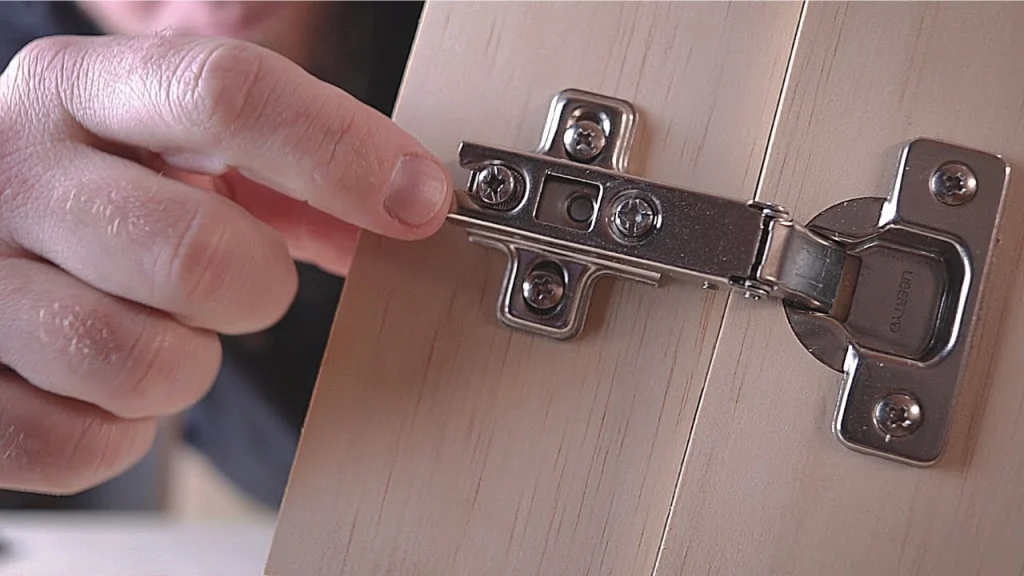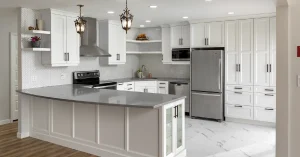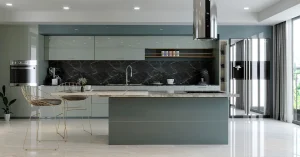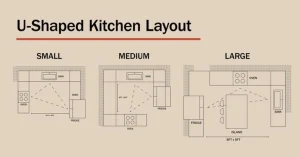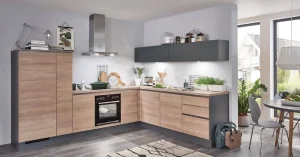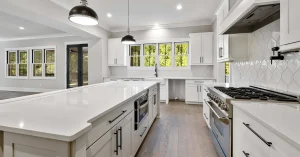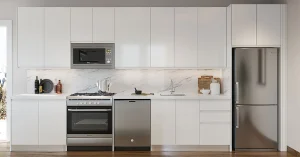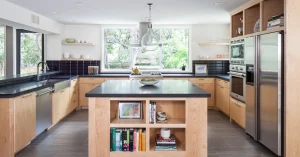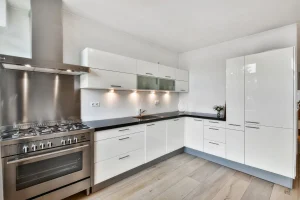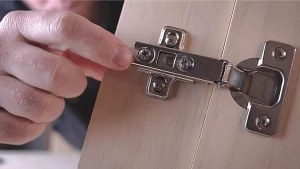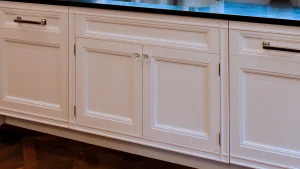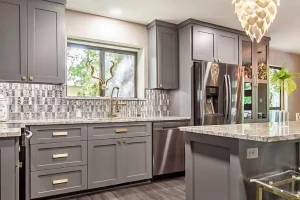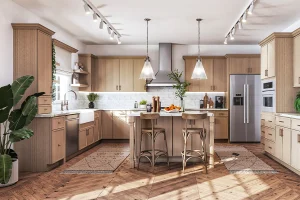Choosing the right hinges for your cabinets is essential for both functionality and aesthetics. Cabinet hinges not only play a crucial role in how your cabinet doors open and close, but they also affect the overall look and performance of your cabinets. Here’s a guide to help you select the best hinges for your project:
1. Consider the Cabinet Type: Framed vs. Frameless
Before selecting hinges, identify the type of cabinets you have:
- Frameless Cabinets (European-style): These cabinets do not have a face frame. The doors are attached directly to the cabinet box, requiring specific types of hinges such as European concealed hinges.
- Framed Cabinets (Traditional-style): These cabinets have a face frame, and the doors are mounted onto the frame. For framed cabinets, you can choose between concealed hinges or exposed hinges.
2. Choose the Right Overlay Type
The “overlay” refers to how much of the cabinet frame or box the door covers when closed. The type of overlay will determine the style of hinge you need.
- Full Overlay Hinges: These hinges are used when the cabinet door completely covers the front of the cabinet (for both framed and frameless cabinets). This provides a clean, modern look, with no part of the cabinet box or frame visible.
- Best for: Frameless cabinets, or framed cabinets with a full overlay design.
- Partial Overlay Hinges: These hinges are used when the cabinet doors only partially cover the cabinet frame or box, leaving a portion of the frame visible.
- Best for: Framed cabinets with a more traditional look.
- Inset Hinges: With inset doors, the door is flush with the frame or cabinet box when closed. The door sits “inside” the cabinet opening rather than on top of it.
- Best for: Inset cabinetry (both framed and frameless).
3. Determine the Hinge Style
Hinge style affects how visible the hinges are and the aesthetic of your cabinets:
- Concealed Hinges (European Hinges): These hinges are hidden when the cabinet door is closed, providing a seamless, clean appearance. They are popular for modern and minimalist designs.
- Pros: Clean look, adjustable for door alignment, soft-close options.
- Best for: Frameless cabinets or anyone looking for a sleek, modern appearance.
- Exposed Hinges: These hinges are visible when the cabinet doors are closed, giving a more traditional or decorative look. They come in various finishes to match the style of the kitchen.
- Pros: Adds a decorative touch, easier to install.
- Best for: Framed cabinets with a rustic or vintage style.
4. Soft-Close vs. Self-Close Hinges
- Soft-Close Hinges: These hinges are equipped with a mechanism that prevents the door from slamming shut. Instead, the door closes gently and quietly, even if pushed hard. Soft-close hinges are ideal for families or homeowners looking for quiet functionality.
- Pros: Prevents slamming, extends the life of the cabinet, safer for small children.
- Self-Close Hinges: These hinges pull the cabinet door closed when it’s near the fully closed position. While not as quiet as soft-close hinges, they ensure that the door always closes fully.
- Pros: Ensures the cabinet door closes automatically, generally more affordable than soft-close.
5. Material and Finish of the Hinges
Hinges come in various materials and finishes that should match the style and color scheme of your cabinets and kitchen. Common materials include:
- Stainless Steel: Durable and rust-resistant, making it ideal for humid areas like kitchens and bathrooms.
- Brass or Bronze: Offers a more decorative and classic look. Often used for exposed hinges in traditional kitchens.
- Nickel or Chrome: Provides a sleek, modern look and is highly durable.
When choosing the finish, consider matching it to your cabinet hardware (knobs or handles) for a cohesive look.
6. Check for Adjustability
Many modern hinges, particularly European-style concealed hinges, allow for adjustments in three directions: side-to-side, up-and-down, and in-and-out. This adjustability helps ensure that your cabinet doors are perfectly aligned after installation.
- 3-Way Adjustable Hinges: These hinges let you fine-tune the door’s position after installation, ensuring a perfect fit even if the cabinets aren’t perfectly square.
- Best for: Frameless cabinets, or those requiring precise door alignment.
7. Ease of Installation
If you’re planning a DIY installation, look for hinges that are easier to install:
- Clip-On Hinges: These hinges are easy to install and remove. They simply clip onto the mounting plate attached to the cabinet. Clip-on hinges are often used with European concealed hinges.
- Pros: Easy to install and adjust.
- Screw-On Hinges: These are installed with screws and are generally more time-consuming to adjust. However, they offer solid durability once installed.
- Pros: Secure and durable installation.
8. Specialty Hinges for Unique Applications
- Pivot Hinges: Ideal for cabinets with doors that swing both ways, often used for corner cabinets or specialty applications.
- Surface-Mount Hinges: These hinges attach to the surface of the cabinet and door, ideal for quick installation or retrofitting.
- Butt Hinges: These are classic hinges that provide visible knuckles when the cabinet is closed. They are usually used for inset cabinet doors.
Conclusion
Choosing the right cabinet hinges depends on your cabinet style, the look you want to achieve, and the functionality you need. Consider the type of cabinet (framed or frameless), the overlay style, and whether you prefer concealed or exposed hinges. Don’t forget to look at soft-close and self-close options for added convenience and durability. By selecting the right hinges, you can improve both the performance and aesthetic of your cabinets, ensuring they last for years to come.
